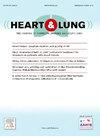Association between dental floss use and atherosclerotic cardiovascular disease in American adults
IF 2.6
4区 医学
Q2 CARDIAC & CARDIOVASCULAR SYSTEMS
引用次数: 0
Abstract
Background
Atherosclerotic cardiovascular disease (ASCVD) remains a major cause of global morbidity and mortality. Emerging research suggests that oral hygiene practices, particularly dental floss use, may reduce the risk of ASCVD.
Objectives
The purpose of this study was to examine the association between dental floss use and ASCVD prevalence.
Methods
Data from NHANES participants who completed home interviews and dental evaluations were analyzed. ASCVD was defined as angina, stroke, myocardial infarction, or coronary artery disease. Dental floss use was self-reported over the past seven days. Covariates included demographic, socioeconomic, lifestyle, and clinical factors. Weighted logistic regression was used to assess the relationship between dental floss use and ASCVD prevalence.
Results
This study included a total sample of 7253 participants with a mean age of 53.8±14.6 years. The sample consisted of 47.6 % male participants. The ethnic composition included 64.3 % Non-Hispanic White. Regular dental floss use was correlated with a lower likelihood of developing ASCVD and Stringent Criteria (infarction or stroke), with ORs of 0.76 (95 % CI: 0.60, 0.97) p=0.028 and 0.68 (95 % CI: 0.49, 0.94) p=0.022, respectively. Flossing 3–4 days/week was associated with reduced ASCVD risk, OR = 0.57 (95 % CI: 0.38, 0.84) p=0.006. Similar reductions were seen for stringent criteria: flossing 3–4 days/week: OR = 0.57 (95 % CI: 0.32, 0.99) p=0.047, flossing ≥5 days/week: OR = 0.69 (95 % CI: 0.47, 1.00) p=0.049.
Conclusions
Regular dental floss use may reduce the risk of ASCVD. These results support the inclusion of oral hygiene practices in cardiovascular disease prevention strategies.
美国成年人使用牙线与动脉粥样硬化性心血管疾病之间的关系
背景:动脉粥样硬化性心血管疾病(ASCVD)仍然是全球发病率和死亡率的主要原因。新的研究表明,口腔卫生习惯,特别是使用牙线,可能会降低ASCVD的风险。目的研究牙线的使用与ASCVD患病率之间的关系。方法对NHANES参与者完成家庭访谈和牙齿评估的数据进行分析。ASCVD定义为心绞痛、中风、心肌梗死或冠状动脉疾病。过去7天使用牙线的情况是自我报告的。协变量包括人口统计学、社会经济、生活方式和临床因素。采用加权logistic回归评估牙线使用与ASCVD患病率之间的关系。结果本研究共纳入7253名参与者,平均年龄为53.8±14.6岁。样本包括47.6%的男性参与者。种族构成包括64.3%的非西班牙裔白人。定期使用牙线与发生ASCVD和严格标准(梗死或卒中)的可能性降低相关,or分别为0.76 (95% CI: 0.60, 0.97) p=0.028和0.68 (95% CI: 0.49, 0.94) p=0.022。每周使用牙线3-4天与ASCVD风险降低相关,OR = 0.57 (95% CI: 0.38, 0.84) p=0.006。严格的标准也有类似的减少:每周使用牙线3-4天:OR = 0.57 (95% CI: 0.32, 0.99) p=0.047,每周使用牙线≥5天:OR = 0.69 (95% CI: 0.47, 1.00) p=0.049。结论经常使用牙线可降低ASCVD的发生风险。这些结果支持将口腔卫生习惯纳入心血管疾病预防策略。
本文章由计算机程序翻译,如有差异,请以英文原文为准。
求助全文
约1分钟内获得全文
求助全文
来源期刊

Heart & Lung
医学-呼吸系统
CiteScore
4.60
自引率
3.60%
发文量
184
审稿时长
35 days
期刊介绍:
Heart & Lung: The Journal of Cardiopulmonary and Acute Care, the official publication of The American Association of Heart Failure Nurses, presents original, peer-reviewed articles on techniques, advances, investigations, and observations related to the care of patients with acute and critical illness and patients with chronic cardiac or pulmonary disorders.
The Journal''s acute care articles focus on the care of hospitalized patients, including those in the critical and acute care settings. Because most patients who are hospitalized in acute and critical care settings have chronic conditions, we are also interested in the chronically critically ill, the care of patients with chronic cardiopulmonary disorders, their rehabilitation, and disease prevention. The Journal''s heart failure articles focus on all aspects of the care of patients with this condition. Manuscripts that are relevant to populations across the human lifespan are welcome.
 求助内容:
求助内容: 应助结果提醒方式:
应助结果提醒方式:


